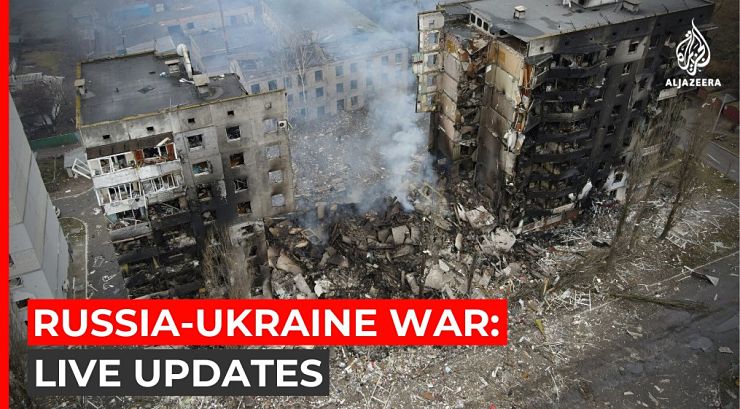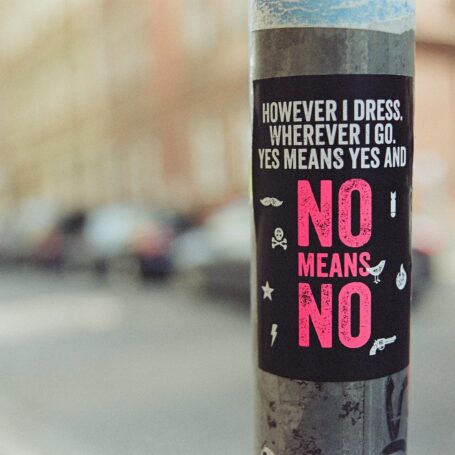Making Sense of What We Hear About Ukraine: An Interview with Dr Daniela Dimitrova

Every war updates what fills the arsenals, and the Russia-Ukraine war – with its thermobaric rocket launchers, hypersonic missiles and Javelin anti-tank weapons systems – is no different. In the digital age, the information battles that accompany every war are no different, and the current conflict is seeing the immediacy and rawness of social media (and active efforts at disinformation) crafting how the rest of the world sees the war.
To help bring some order to how we can filter and understand information about the war Martha Avtandilian, publisher of social science journals with SAGE Publishing (the parent of Social Science Space), interviewed Daniela Dimitrova, the editor-in-chief of Journalism & Mass Communication Quarterly. Dimitrova is a professor at Iowa State University’s Greenlee School of Journalism and Communication; under a Fulbright Fellowship she currently serves as a professor at the University of Vienna in Austria. Her research interests include political communication, cross-cultural journalism studies and media coverage of conflict and migration, and her recent work focuses on the impact of social media on political knowledge and civic engagement as well as refugee communications, with her Fulbright project on “Global Migration and the Media.”
Dimitrova has worked closely over the last 15 years with the Association for Education in Journalism and Mass Communication, and has edited Journalism & Mass Communication Quarterly, the association’s flagship journal, since 2020. Her research has been published widely in journals such as Communication Research, New Media & Society, Press/ Politics, International Communication Gazette, Journalism Studies, and the Journal of Computer-Mediated Communication. Her edited volume, Global Journalism: Understanding World Media Systems, appeared in 2021. She has received many awards, including AEJMC Senior Scholar and the International Service Award and the Excellence in Graduate Mentoring Award from Iowa State’s College of Liberal Arts and Sciences.
Martha Avtandilian: What role(s) has social, digital, and new media played in shaping sociopolitical narratives in Russia, Ukraine, and abroad (in the context of the war/leading up to the war)?

Daniela Dimitrova: Scholars have long established the importance of media coverage of global conflicts for both public opinion as well as foreign policymaking. And it seems like different conflicts are more associated with different types of media. For example, we may recall the role of radio during World War II with the well-known Edward R. Murrow broadcasts from London. Similarly, television news reporting had a tremendous impact during the Vietnam War, bringing the reality of war in American living rooms. The recent Iraq War is often linked to live television coverage as well as embedded reporting. I think that social media can be seen as most impactful channel in the current Ukraine-Russia conflict.
Avtandilian: What are some of the most unusual new methods of propagating deliberate narratives you’ve seen in the context of Russia’s aggression in Ukraine?
Dimitrova: I think that the most unique aspect has been the use of deep fakes on social media, which are then picked up and broadcast by traditional media. Deep fakes are usually videos that have been manipulated technologically to look real. We have already observed the use of deep fake showing Ukrainian President Volodymyr Zelensky “live” asking for Ukrainian soldiers to capitulate. Similarly, there have been deep fake videos of President Putin calling for Russian soldiers to return. These types of fake videos are hard to detect by an average person and carry real danger for public manipulation. This is why Journalism & Mass Communication Quarterly recently published a forum on online mis/disinformation – you can find it HERE. The forum gives some good tips on what each of us can do to arm ourselves against online disinformation, including pre-bunking false claims as well as quickly correcting falsehoods with appropriate evidence and disclaimers. The role of journalists is especially critical in this case.
Avtandilian: Much of your work is in visual and media framing – can you talk a little bit about how those elements are in play in the context of this war, particularly in a cross-cultural context as observed from a Western perspective?
Dimitrova: Media framing, simply put, refers to what elements of the story are highlighted in a news report and what elements are buried or missing. This applies to visuals but also to the selection of sources, quotes, and certain catch phrases or metaphors. Consider, for example, calling a political leader an autocrat, a dictator, a Nazi or even comparing them to Hitler. Each term has different connotations for the audience. Similarly, whether we call a military conflict an invasion and emphasize victims and destruction in the media narratives or whether we call it a war and then highlight military attacks and precision bombing frames the same story very differently.
My comparative media research about the coverage of the Iraq War has shown for example that Arab media focused on the human cost of war while US media avoided such framing. As a result, Arab audiences saw a starkly different portrayal of the war. Swedish media, on the other hand, often focused on anti-war protest against the Iraq War, for instance. There is some disagreement in the literature whether journalists deliberately skew information or whether media framing results from journalistic routines and practices. Intentional or not, media framing is unavoidable. And when a country is directly involved in a military conflict, there is a tendency for media to “index” official government views and often echo or promote the arguments of the government. A food example here is the “leaking” of information about weapons of mass destruction in the case of Iraq, which was later found to be false but was used as justification for war. Even prestigious media organizations such as the New York Times can be part of such rallying behind the flag.
Avtandilian: Any tips for news consumers?
Dimitrova: One of my main messages would be that we all need to update our media literacy skills and perhaps even take some training modules for the digital age. The level of sophistication of some these disinformation campaigns is quite high. Combined with our own predispositions and personal biases, there is a danger to remain in an “echo chamber.” A few good resources that I would recommend are the Harvard’s Shorenstein Center Media Manipulation Casebook as well as the Open Society media literacy resources, including an index that assesses the public resilience to fake news among European countries. Not surprisingly, media freedom is highly correlated with media literacy. These are valuable resources not only for educators and policymakers, but also for media practitioners, civil society organizations and the public at large.
Avtandilian: How do race, ethnicity, and religion shape Western perceptions and media coverage of wars “abroad?” What about public perception of refugees? Do those perceptions differ based on where they originate from (i.e. Western vs non-Western coverage, etc)?
Dimitrova: My own research has also examined the media framing of refugees where, with colleagues Emel Ozdora-Aksak and Colleen Connolly-Ahern, we found some noteworthy differences between Bulgarian media, which focused on criminality and migrants as a threat; Turkish media, which tended to show a human interest angle and personalized stories; and British media, with emphasis on global power relations and refugees as a bargaining chip. This research was mostly about refugees from Syria as well as North Africa and the Middle East. In general, new framing tended to be negative and more distanced and impersonal the further geographically a country was removed from the country of origin.
The Ukraine-Russia conflict, unfortunately, has led to the exodus of millions of Ukrainian families who are entering neighboring countries. Although I have not done a systematic study of the coverage yet, what I can see in Western media is that the way the news reports on the Ukrainian refugees is much more positive, compared to say Syrian refugees or migrants from Iraq or Afghanistan. The Western media has already been criticized for favoritism and even for open racism in their reporting, with journalists on the scene commenting that they are shocked to see “people who look like me” and who have the similar culture and education being forced to flee their country as refugees. This stands in stark contrast to previous coverage of migration from the so-called Global South. I should also add that similar criticisms have been made regarding asylum policies, noting the much more welcoming attitude of countries in the region such as Poland, Hungary and Austria. In Austria, where I currently am based as a Fulbright Professor, Ukrainians can legally stay up to two years and local universities are offering multiple scholarships and support for students from Ukraine as well.
Avtandilian: What sources do you personally use when reading up on news (specifically, news around conflict)?
Dimitrova: I would recommend that people look at multiple media sources. Different language sources are also a plus. Among my favorites are the BBC and Al Jazeera. I would also encourage people to think more critically about the source as well as the intent behind any social media message, since this is where the war for the “hearts and minds” of foreign publics is now being played, which was highlighted in our recent book, Global Journalism.


























































































